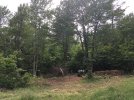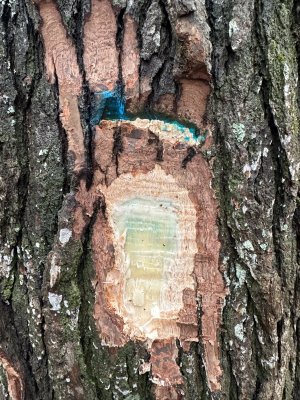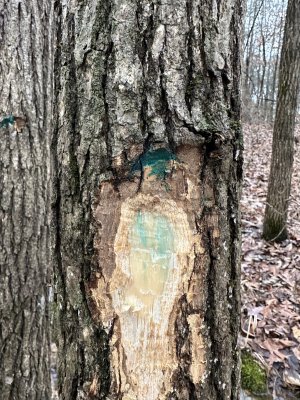Natty Bumppo
5 year old buck +
Back in early April I began taking some trees down in a corner of one of my food plots to create more food plot and open up some nearby apples to more sunlight. Been bucking up and stacking the wood and was hoping to get all of the trees on the ground before leaf out so I didn't have to deal with full canopies once on the ground. Didn't quite get there.
About 10 days ago I tried the hack and squirt method on the few remaining red maples. Was hoping to kill the trees so they would drop their leaves and I could then drop, delimb, and buck then up like it was mid winter. I've never done hack and squirt before. I used straight 41% gly. Made several hacks around each tree. The trees show no signs of stress at all.
Do I need to be patient? Is it a bad time of year for hack and squirt? Should I just go in a girdle them and be done with it?
Thanks in advance.


About 10 days ago I tried the hack and squirt method on the few remaining red maples. Was hoping to kill the trees so they would drop their leaves and I could then drop, delimb, and buck then up like it was mid winter. I've never done hack and squirt before. I used straight 41% gly. Made several hacks around each tree. The trees show no signs of stress at all.
Do I need to be patient? Is it a bad time of year for hack and squirt? Should I just go in a girdle them and be done with it?
Thanks in advance.





